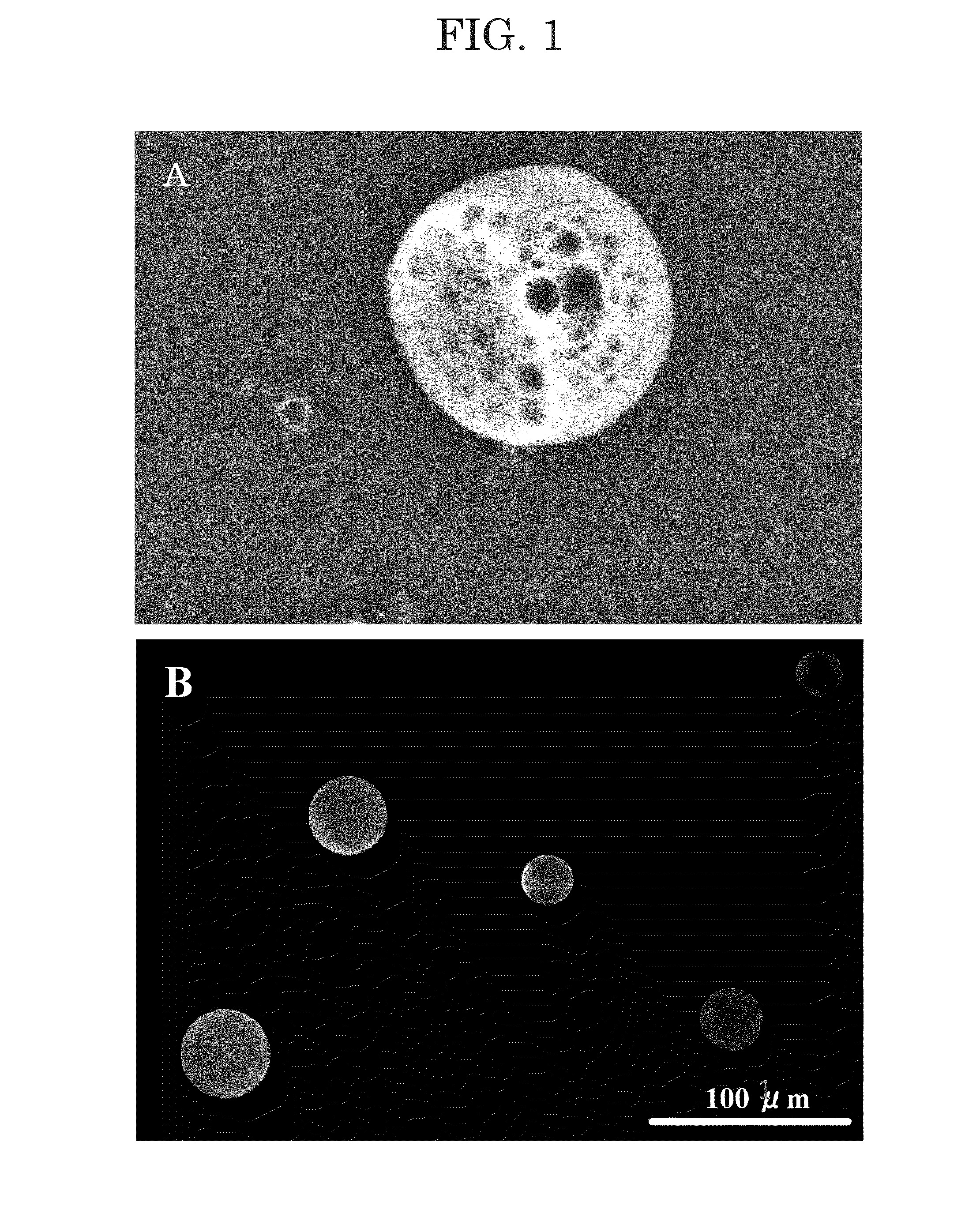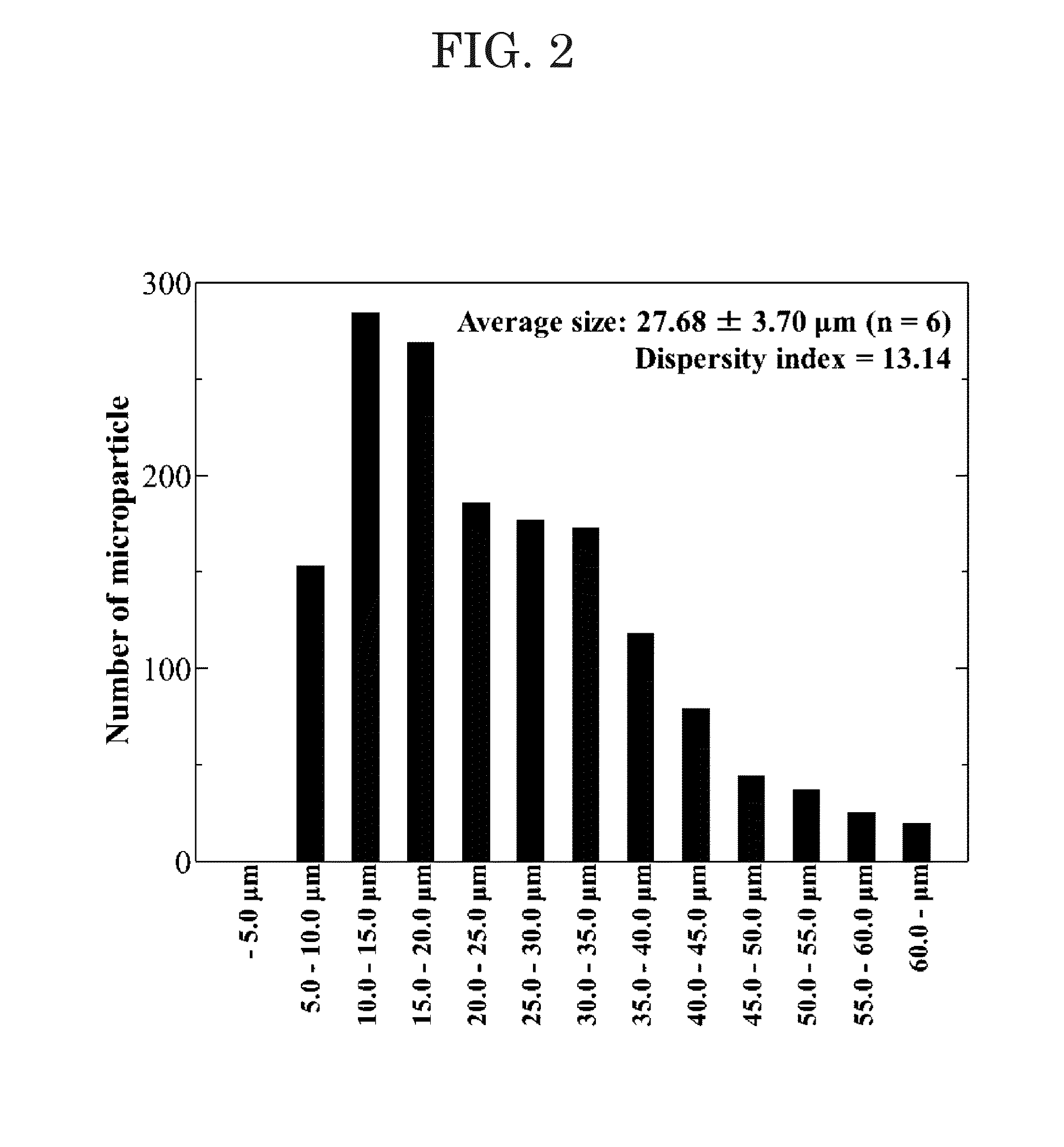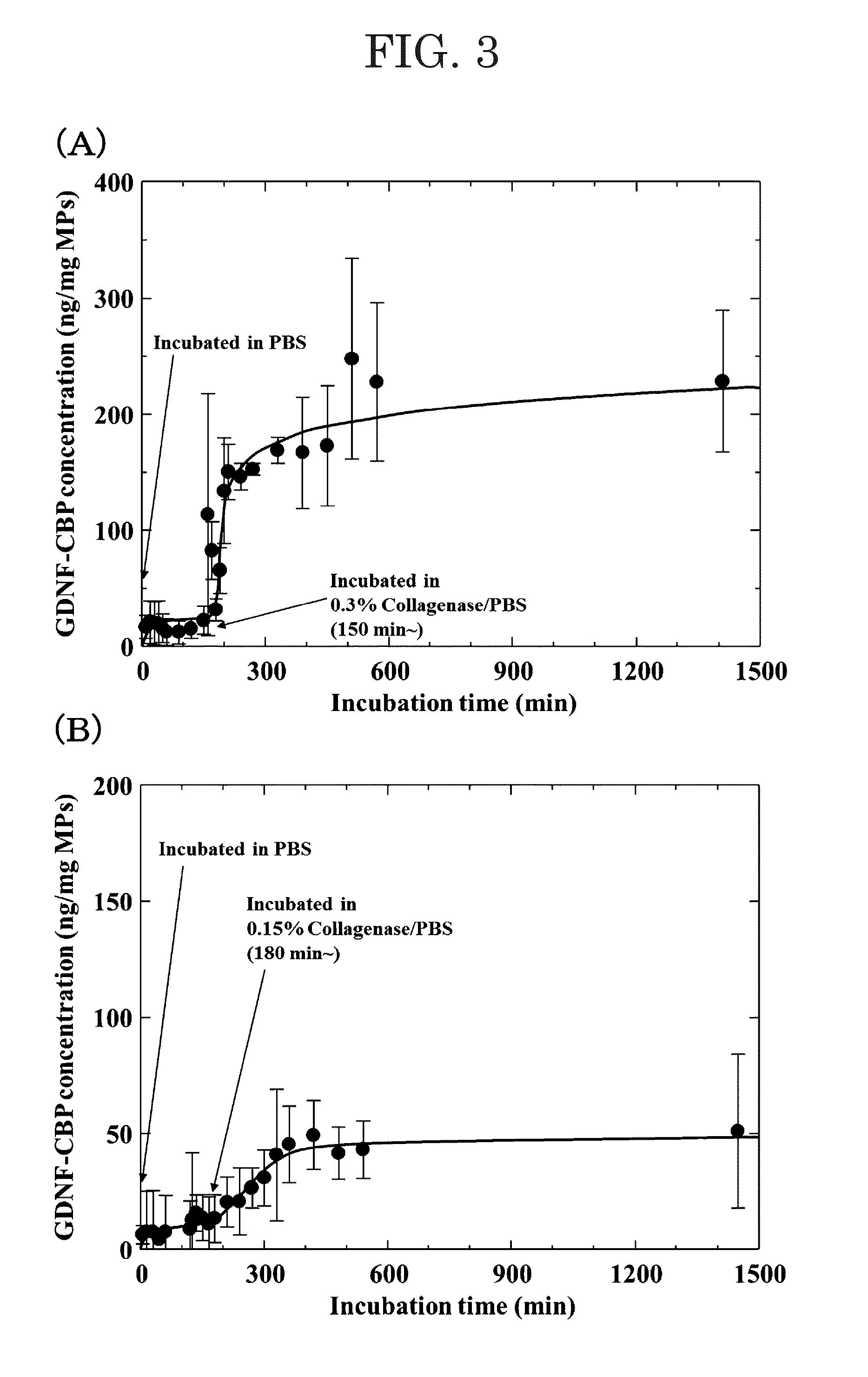Composition for controlled release of physiologically active substance
- Summary
- Abstract
- Description
- Claims
- Application Information
AI Technical Summary
Benefits of technology
Problems solved by technology
Method used
Image
Examples
experiment 1
of Protein-Containing Microparticles
[0064]Microparticles (composition) were prepared using a Water / Oil / Water double emulsion method.
[0065]A chloroform solution including 4% PLGA and 0.1% Pluronic-F68 (manufactured by SIGMA ALDRICH, polyethylene glycol-polypropylene glycol-polyethylene glycol block copolymer) was used as an oil phase, and an aqueous solution including 0.5% collagen and 0.1% Pluronic-F68 was used as a Water phase.
[0066]Collagen-binding peptide-fused glial cell-derived neurotrophic factor (GDNF-CBP) was added to the Water phase at a concentration of 20 μg / mL.
[0067]The solutions were mixed, and subjected to a micro ultrasonic treatment to prepare microparticles.
[0068]The resulting microparticle suspension was added dropwise to a 0.5% Pluronic-F127 (manufactured by SIGMA ALDRICH) aqueous solution, coated with a surfactant, and collected by centrifugation.
[0069]Note that the microparticles may be coated with a hydrophilic biodegradable polymer (e.g., polyvinyl alcohol).
[0...
experiment 2
n of GDNF Contained in Microparticles
[0073]In order to determine whether or not GDNF-CBP was contained in the microparticles, microparticles were prepared in the same manner as described above using GDNF-CBP labeled with a red fluorescent dye (Alexa 594).
[0074]Alexa 594-labeled GDNF-CBP was prepared using a normal protein fluorescent labeling method, and incorporated in the microparticles.
[0075](B) in FIG. 1 is a fluorescence micrograph of the microparticles containing Alexa 594-labeled GDNF-CBP.
[0076]Since red fluorescence emitted from the microparticles was observed in the fluorescence micrograph (Note: (B) in FIG. 1 is in grayscale), it was confirmed that GDNF-CB was contained in the microparticles.
experiment 3
ntrolled Release of GDNF Contained in Microparticles
[0077]In order to determine whether or not the release timing of GDNF-CBP contained in the microparticles can be controlled, release of GDNF-CBP from the microparticles immersed in a phosphate buffer (PBS) and collagenase-containing PBS was evaluated.
[0078]The results are shown in FIGS. 3 and 4.
[0079]The graph (A) in FIG. 3 shows the case where the collagenase concentration was 0.3%, and the graph (B) in FIG. 3 shows the case where the collagenase concentration was 0.15%.
[0080]The graph (C) in FIG. 4 shows the case where the collagenase concentration in PBS was 0.01%, and the graph (D) in FIG. 4 shows the case where the microparticles were immersed in PBS that did not include the collagenase for 20 days.
[0081]Since release of GDNF was not substantially observed in the graph (D) over 20 days, it was confirmed that controlled release of GDNF from the composition (microparticles) prepared in Experiment 1 occurred only in the presence ...
PUM
| Property | Measurement | Unit |
|---|---|---|
| Particle size | aaaaa | aaaaa |
| Shape | aaaaa | aaaaa |
| Biodegradability | aaaaa | aaaaa |
Abstract
Description
Claims
Application Information
 Login to View More
Login to View More - R&D
- Intellectual Property
- Life Sciences
- Materials
- Tech Scout
- Unparalleled Data Quality
- Higher Quality Content
- 60% Fewer Hallucinations
Browse by: Latest US Patents, China's latest patents, Technical Efficacy Thesaurus, Application Domain, Technology Topic, Popular Technical Reports.
© 2025 PatSnap. All rights reserved.Legal|Privacy policy|Modern Slavery Act Transparency Statement|Sitemap|About US| Contact US: help@patsnap.com



